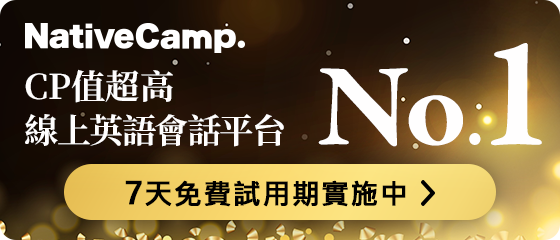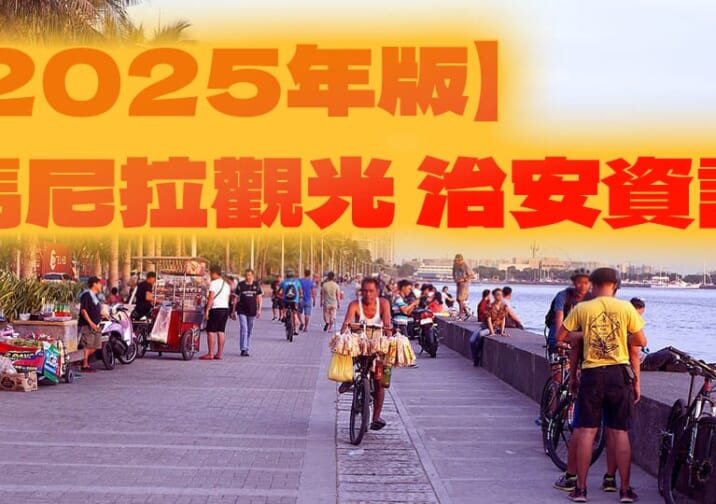英語裡的「get on」跟「get in」都是指搭乘某樣東西的意思,但很難理解在什麼情況下要用哪一個才好。
這裡我要跟大家說明「get on」跟「get in」之間的差異還有與搭乘相關的單字跟短語。
目次
「get on」跟「 get in」的差別和使用方法
「get on」跟「get in」不管哪個都是用來表達在交通工具上所做的「搭乘的動作」。
要用什麼樣的方式搭乘是根據交通工具的大小來做區分。
get on
介係詞on的意思是「在~之上」,用在搭乘上會有「搭在~上面」的感覺。
交通工具比較大的時候,可以在其中來回動作。或者是指搭乘在那個物體的上方時。
大型交通工具的例子
bus(公車)airplane(飛機)train(電車)ship(船)boat(船)yacht(遊艇)
I’m getting on the bus right now. Could you call me back?
我在公車上,可以晚一點再打給我嗎?
It’s time to get on the airplane.
是搭機的時間了。
You need to buy a ticket before you get on a train.
搭電車前你需要去買票。
在交通工具上方的例子
bicycle(單車)horse(馬)motorcycle(摩托車)scooter(速克達)
rides at an amusement park(遊樂園的遊樂設施)skateboard(滑板)
I got on my bicycle and went to my friend’s house.
我騎腳踏車去我朋友家。
It’s hard to get on a horse from the ground.
從地面上馬真的很難。
It could take a few hours to get on a popular ride.
搭乘人氣的遊樂設施也許要等上好幾個鐘頭。
get in
介係詞in的意思是「在~中」,用在搭乘上會有「進入交通工具裡」的感覺。
通常需要彎腰進入交通工具內才能坐到位置上,大多是指比較小型的交通工具,在其中無法到處走動。
也不會乘坐在物體的上方。
car(汽車)taxi(計程車)SUV(運動休閒多用途汽車)truck(卡車)van(廂型車)Uber (優步) canoe(獨木舟)
Kids, get in the car. We should go.
孩子,上車吧。我們要出發了。
It was raining when I got in my track.
當我搭上卡車時,外面下起了雨。
Getting in a canoe is harder than it looks.
搭獨木舟比看起來的還要難。
She told her friend to get in the cab.
她叫她的朋友搭上計程車。
*cab是計程車的別稱,日常生活中不管是哪一種都會用到。
「get into」跟「get in」同樣意思
I saw her get into a taxi this morning.
今天早上我看到她搭上計程車。
I bumped my head when I was getting into the car.
我上車的時候撞到了頭。
「get on」跟「get in」使用時需要注意的地方
根據搭乘的交通工具不同,也有時候會出現不管是用「get on」或「get in」在文法上都是正確的情況。
汽車的情況
He got on the car.
他上車了。
He got in the car.
他坐到車裡。
雖然兩個句子看起來都沒有錯,但意思卻完全不同。當你說get on the car時,意思是說爬上車的「頂部」(車頂或引擎蓋上)。
電車的情況
I’m on the train and should arrive in 10 minutes.
我現在在火車上,還有十分鐘會到。
I’m in the train car towards the back.
我在後面車廂裡。
on the train是「搭乘電車移動」的意思,而in the train是「在電車裡面」的意思,像是例句一樣用來表示自己在電車裡的哪個位置(車廂)時使用。
公車的情況
He’s on the bus, and it should arrive soon.
他在公車上,應該就快要到了。
She stayed in the bus when it stopped at a rest area.
當公車在休息站停下來時,她留在公車上。
「on the bus」跟「in the bus」都是指乘坐在公車的裡面,一般來說比較多人會用「on the bus」。
表達「現在正在搭~」的時候
表達「現在正在搭~」的時候,我們會用「on~」或「in~」來表現。
「on~」
搭乘電車、公車、飛機之類的大型交通工具時會使用。
I’m on a train now. Can I call you back?
我現在在火車上,可以晚一點再打給你嗎?
I was on a bus when my friend texted me.
當我朋友傳訊息給我的時候,我正在公車上。
I watched the movie on the plane on my way back from Tokyo.
在我從東京搭飛機回來的路上我看了那部電影。
*airplane跟plane都是指飛機,使用方式沒有差別。
「in~」
搭乘小客車、計程車之類的小型交通工具時使用。
I’m in a taxi right now. I’ll be there in a few minutes.
我在計程車上,我大概幾分鐘後會到那裡。
I was in the car when I got a phone call from my mom.
當我媽打給我的時候,我正在車上。
I like to listen to the radio when I’m in the car.
我在車上的時候喜歡聽廣播。
「下車」的英文是?
「get on」的反義就是「get off」意思是下車。與「get on」相同的是使用的對象都是大型交通工具。
I’m getting off at the next stop.
我下一站就要下車了。
I got off at the wrong station and had to wait for another train.
我下錯站了,只能等待其他班電車來了。
Please give me a call when you get off the bus.
你下公車之後請打電話給我。
在搭乘物上方下來時也會使用。
He felt ill when he got off the roller coaster.
他從雲霄飛車下來後感覺很噁心。
She got off her bicycle to adjust the seat.
她從單車上下來,調整了她的座椅。
「get in」的反義是「get out of」,與「get in」相同的是使用對象是小型的交通工具。
It was snowing when he got out of the car.
他從車上下來時,外面正在下雪。
We will get out of the taxi at the end of this street.
我們會在這條街的盡頭下計程車。
其他的「搭乘」
ride
乘客需要登上交通工具或是跨騎交通工具時使用。
I always take a jacket when I ride on a plane.
我搭飛機時總是會帶上外套。
She rides the subway home from work.
她搭地鐵通勤回家。
*地鐵在美國是稱作subway,在英國會稱underground或tube,至於在巴黎會稱為metro。
He rides his motorcycle to work every day.
他每天都騎自己的摩托車去上班。
Many children learn to ride a bicycle at an early age.
很多小孩會在小時候學習騎單車。
I never rode on a horse before.
我之前從沒騎過馬。
take
作為移動手段搭乘交通工具時使用。
I take a train to work every day.
我每天都搭電車去工作。
Are you going to take the bus home? I can drive you otherwise.
你要搭公車回家?我也可以開車載你回家喔。
It’s easier to take a taxi to the airport.
當計程車去機場很簡單。
I took the Shinkansen from Tokyo to Osaka.
我搭新幹線從東京到大阪。
*新幹線的英語是bullet train或是high-speed train,但「Shinkansen」這個詞也是相當多人知道。
Take是用在car或bicycle強調「拿走」的語意。
I took the car to a repair shop today.
今天我帶著我的車去維修廠。
He took his bike to Japan and made the long trip.
他帶著他的單車去日本展開他的長途旅行。
get
只有get也可以用來表達「搭乘」的意思。
If we don’t get the bus by tonight, we will have to fly there tomorrow morning.
如果我們今晚沒有搭上那台巴士,我們就必須明天早上搭飛機去。
Why don’t you guys just get a train? It’s faster and more comfortable.
你們為什麼不搭電車就好了?速度還比較快又比較舒服。
catch
給人一種抓住交通工具的感覺,有為了不要耽誤而趕緊搭乘的意思。
Are you driving there or will you catch a train?
要開車去那裡還是搭電車去呢?
Sorry, I’m in a hurry. I have to catch the train.
對不起我趕時間,我需要去趕火車了。
If I don’t catch a bus right now, I’ll never make it on time.
如果我現在沒搭上公車,絕對會來不及。
drive
自己駕駛去哪裡的時候會使用。
I drive to work every day.
我每天都開車上班。
I’ll drive you home.
我開車送你回家。
board
通常用於表達搭乘飛機、船或列車之類的大型交通工具。
I boarded a plane for New York.
我搭上飛往紐約的班機。
ABC Airways Flight 123 to Tokyo is now boarding at Gate No. 10.
ABC航空飛往東京的123號班機請到10號門搭乘。
fly
搭飛機前往某地的表現,「fly to~」是搭乘飛機到某地的意思,而「 fly from~」是從某地搭飛機來的意思。
He is flying to California next week on business.
他下週會飛到加州出差。
I’m flying from Tokyo to Hokkaido tonight.
我今晚會從東京搭飛機到北海道。
by+交通工具
與搭乘的交通工具有關的短句,大部分的交通工具都可以使用這句子。
We can go by car or by bus.
我們可以開車或是搭公車去。
I commute by car.
我開車通勤。
I’m getting there by train.
我搭電車到那裡。
I’m arriving by boat.
我搭船到那裡。
I’m arriving by plane.
我搭飛機到那裡。
這裡要注意的是「by+交通工具」的句型不能加the,如果加上the變成by the car的話,by的意思就會變成「在旁邊」、「隔壁」的意思。
We can go there by car.
我們可以開車去。
My keys are probably by the car. I think I dropped them there.
我的鑰匙串有可能會在車旁邊,我想應該是掉在那裡了。
hop on、hop in
「搭乘~」的口語說法。
Hop是「跳躍」的意思,「hop on」跟「hop in」有「趕緊上車」的語意。反義詞的「hop off」則是「趕緊下車」的意思。
Hop in if you want to go to the mall with me.
趕緊上車,如果你想跟我去百貨商場的話。
He hopped on his bike and took off for the park.
他跳上他的單車前往公園。
He hopped off his bike and chained it to a post.
他跳下他的單車然後把它鎖在柱子邊。
在觀光區經常可以看到有賣“hop-on hop-off bus tour”的票券,只要購買這票券就可以在期限內無限次數搭乘觀光巴士。
總結
與搭乘交通工具有關的英語表現意外的很多,各式各樣的單字和短句都可以根據交通工具或狀況的不同做使用。
日常會話中也經常會用到「搭乘」的表現,各位可以趁這個機會學習如何活用喔!









